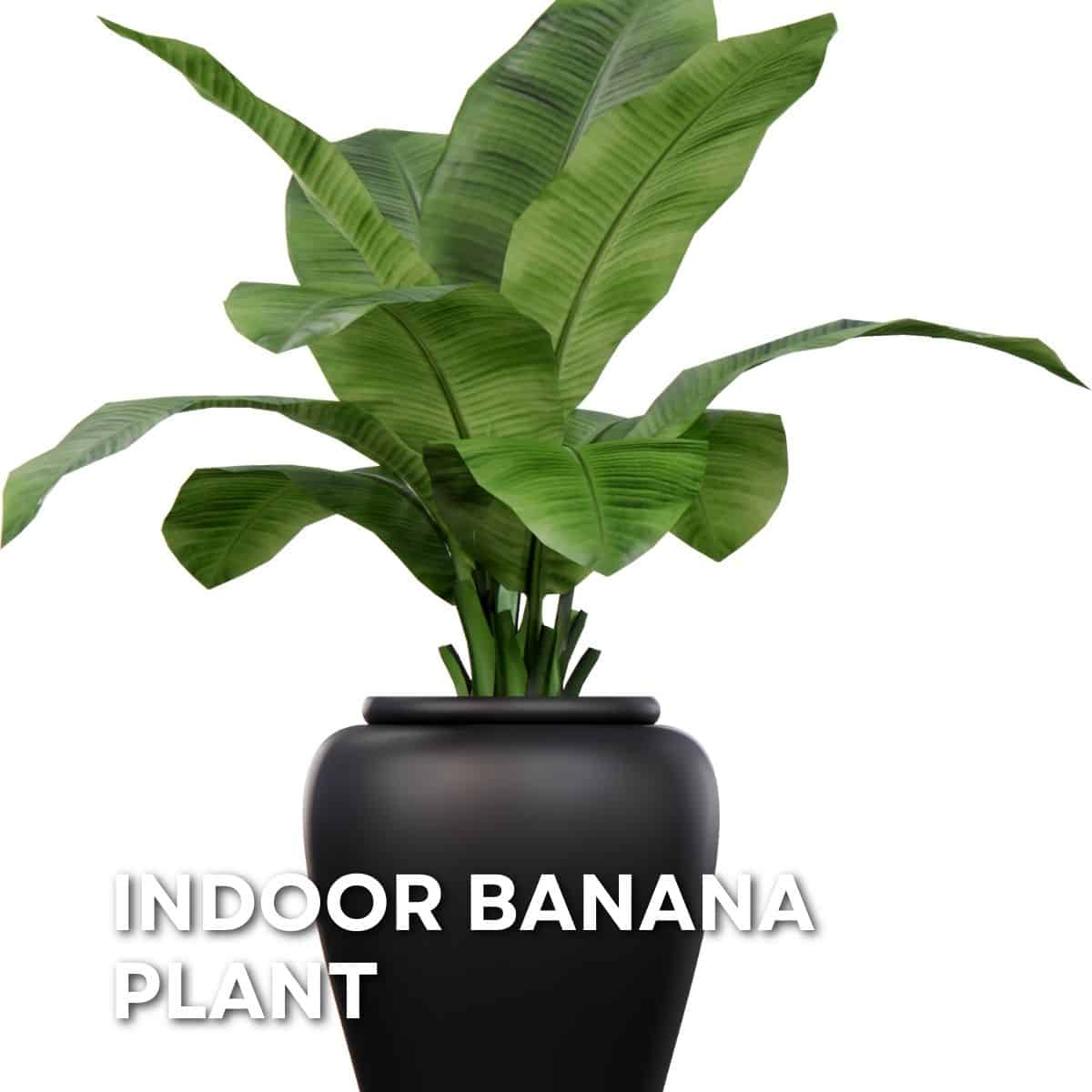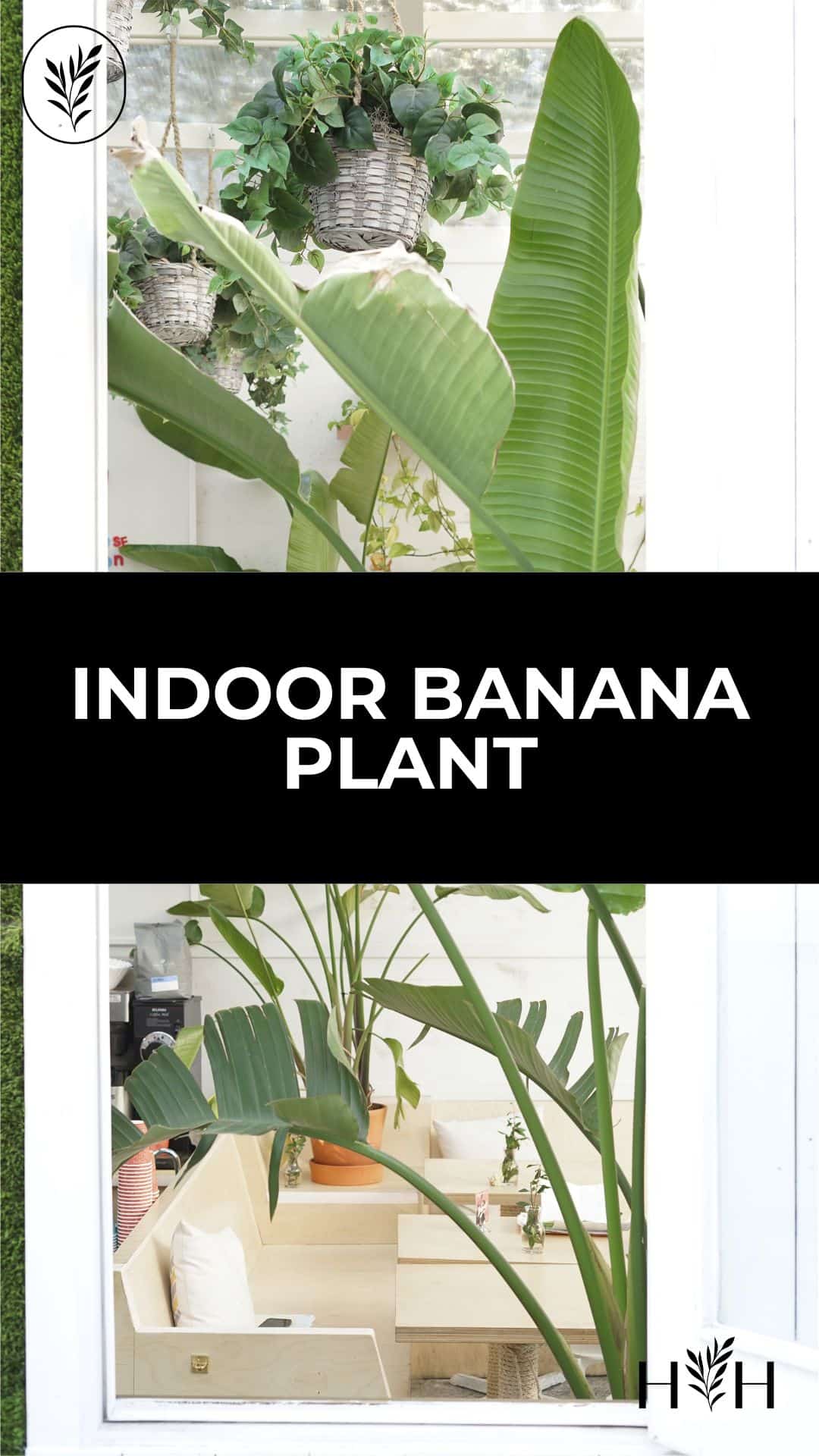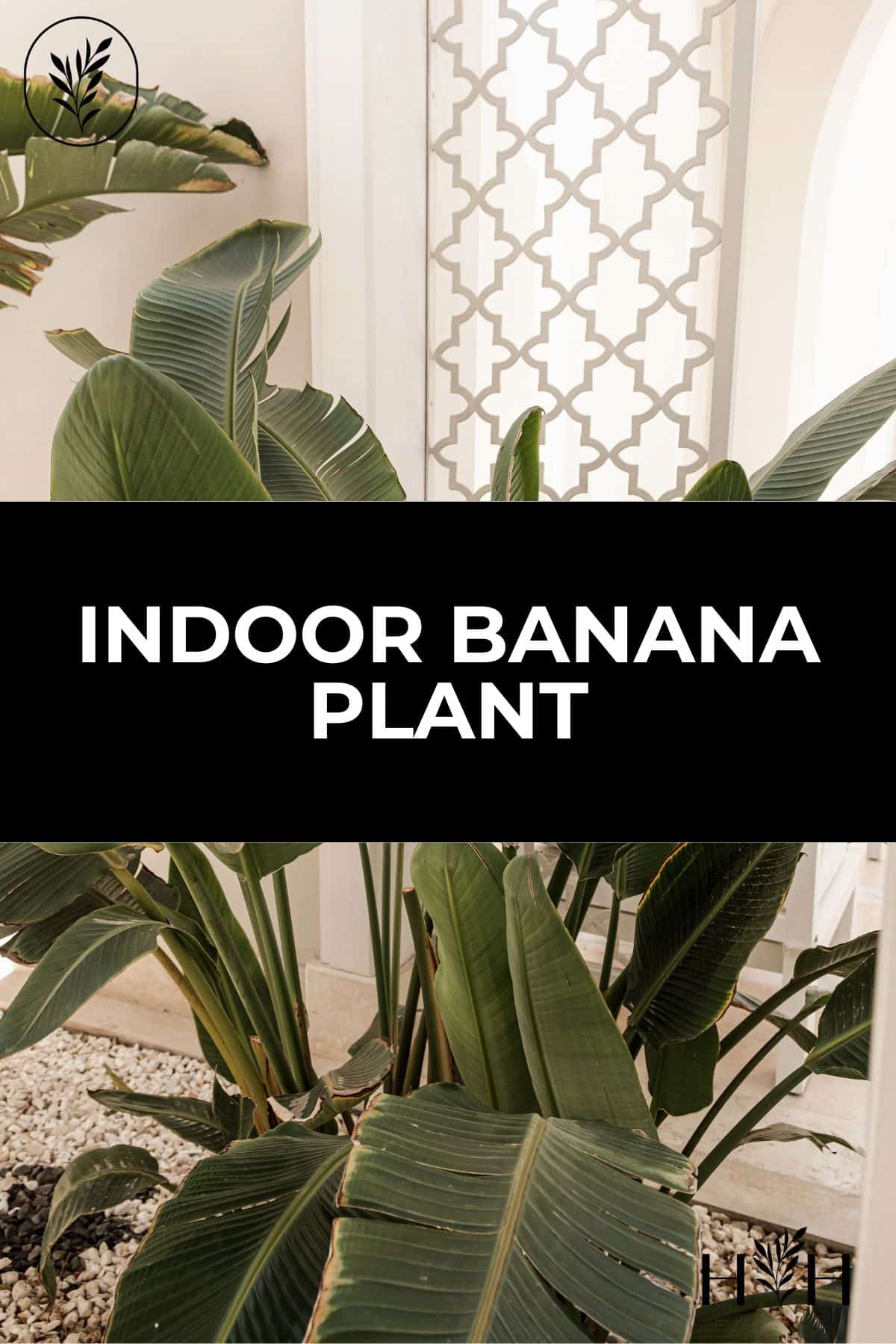Are you looking for a unique and rewarding gardening project that will bring joy to your home? Growing an indoor banana plant is the perfect way to add some tropical beauty. While these plants rarely fruit indoors, they can be very unique houseplants!
With just a few simple steps, anyone can successfully grow their own indoor banana plant. We’ll cover all aspects from planting tips to light requirements and pruning & maintenance techniques so that you have everything you need for success. Plus we’ll share some secrets on how to prevent pests & diseases.
Indoor banana plant basics
Banana plants are a great addition to any indoor garden. They’re easy to care for, require minimal maintenance, and can add a unique tropical touch to your home. But before you get started with your new banana plant, there are some basics that you should know about caring for it indoors.
Banana plants need plenty of light in order to thrive indoors. Place the plant near an east- or south-facing window where it will receive at least six hours of direct sunlight each day. If possible, rotate the pot occasionally so that all sides of the plant get equal amounts of light exposure. If natural light isn’t available, supplement with artificial lighting such as fluorescent bulbs or LED grow lights placed within 12 inches from the top of the plant canopy for best results.
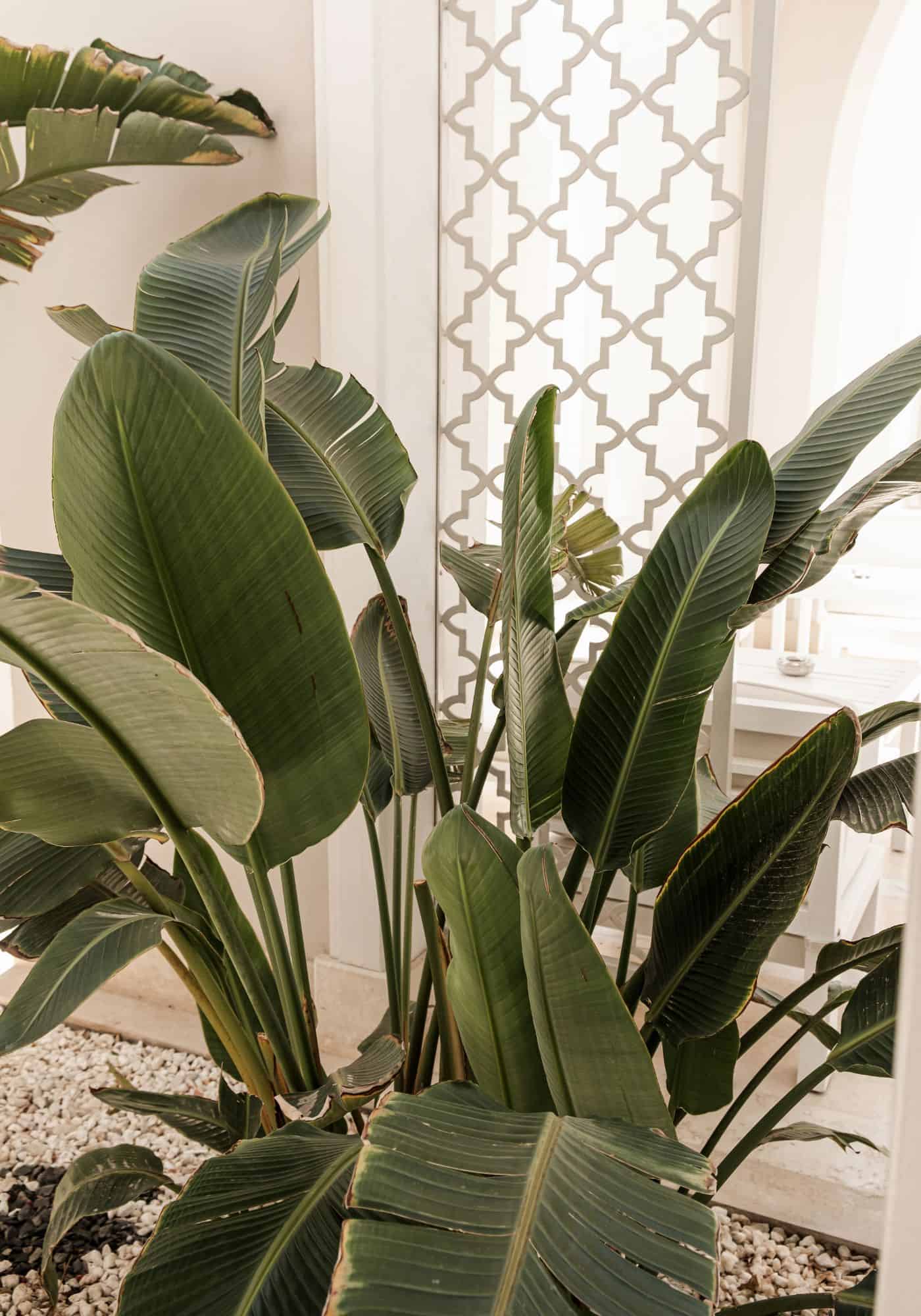
When watering your banana plant, be sure not to overdo it. Too much water can cause root rot and other issues that could harm your plant’s health. The soil should be kept moist but not soggy – check by sticking your finger into the soil up to knuckle depth; if it feels dry then give it a good drink.
Water until the excess liquid begins draining out from the bottom drainage holes in the pot and discards this runoff immediately after each watering session. During periods when growth is slower (such as winter), reduce watering frequency slightly but still make sure not to let the soil become completely dry between sessions – aim for once every 10 days instead of weekly during these times.
Bananas prefer warm temperatures ranging from 65°F (18°C) to 85°F (29°C). Avoid exposing them directly to cold drafts or air conditioning vents, as this could damage their leaves and stunt their growth rate significantly.
Additionally, humidity levels should remain relatively high around 50% – 70%. To help maintain proper humidity levels, misting regularly with room temperature water is recommended; however, avoid spraying directly onto foliage as this may cause leaf spotting or fungal diseases.
By understanding the basics of indoor banana plants, you can start your journey to becoming a successful gardener – and now let’s take a look at how to plant your own.
Planting your banana plant in a container
When it comes to planting a banana plant indoors, there are a few key things to keep in mind. First and foremost, you’ll need the right soil type for your banana plant. A good potting mix is essential for optimal growth; look for one that has plenty of organic matter such as peat moss or composted plant matter. Additionally, make sure the container you choose is large enough to accommodate the size of your banana plant; most varieties will require at least an 8-inch pot with drainage holes in the bottom.
Once you have chosen your soil and container, it’s time to get planting. Planting a banana tree indoors is easy—simply place two or three seeds into each hole and cover them lightly with soil before watering thoroughly. Keep in mind that bananas prefer warm temperatures so if possible try to keep them away from cold drafts or windowsills during winter months.
Proper watering is also important when caring for indoor banana plants; water deeply but infrequently (once every 7-10 days) until established then reduce frequency slightly depending on how quickly your soil dries out between waterings. Fertilizing once per month with an all-purpose fertilizer should be sufficient—just remember not to overdo it as too much fertilizer can cause leaf burn and other issues.
Pruning & maintenance are also necessary when growing a healthy indoor banana tree: remove any dead leaves or stems regularly using sharp pruning shears while avoiding cutting off any new shoots which may appear near the base of the trunk throughout its life cycle. Additionally, check periodically for pests & diseases such as scale insects which can damage foliage if left untreated – use insecticidal soap spray if needed but always follow directions carefully when applying chemicals around edible plants like bananas.
Lastly, harvesting bananas from an indoor tree requires patience – typically fruit takes anywhere from 6-9 months after flowering before being ready for picking so don’t expect immediate results. When they do ripen however, simply cut bunches off at their stem attachment points using scissors or pruners – just be sure not to pull on them directly as this could damage both fruit and foliage alike. Enjoy.
Once your banana plant is planted, you can move on to the next step: making sure it gets the right amount of light.
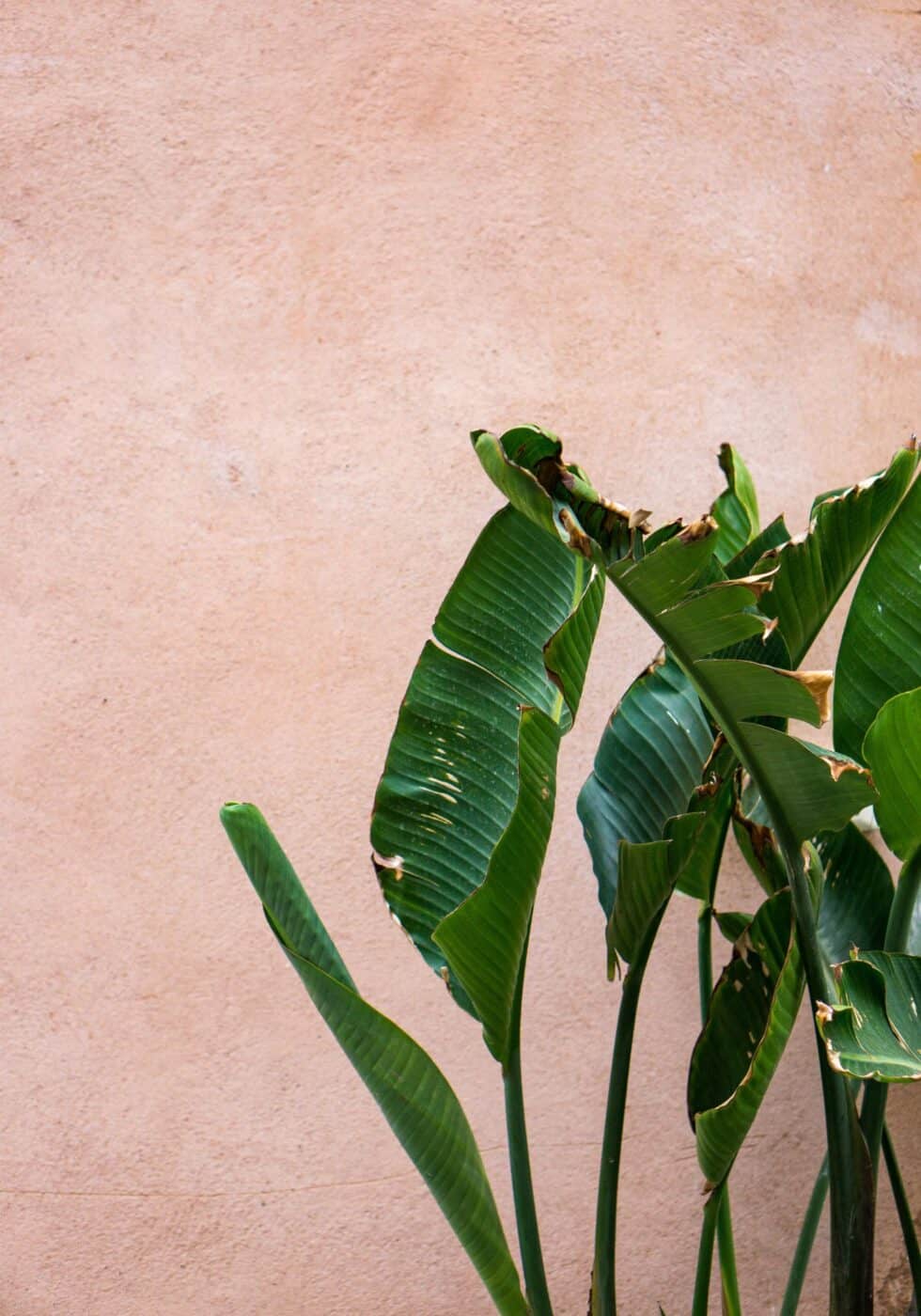
Light requirements for indoor-grown bananas
Light is essential for any plant to grow and thrive, including the banana plant. The amount of light a banana plant needs depends on the variety you have chosen. Most varieties require bright indirect sunlight or full sun for at least six hours each day. If your home does not get enough natural light, then you may need to supplement with artificial lighting such as fluorescent bulbs or LED lights placed close to the plants.
When choosing a spot in your home for your banana plant, make sure it gets plenty of direct sunlight during the morning and early afternoon hours when possible. Avoid placing them near windows that face south or west since they can be too hot during these times of day and could cause damage to the leaves. Also, avoid spots that are drafty since this can dry out their soil quickly, leading to wilting leaves and stunted growth.
If you find that your indoor space doesn’t get enough natural light, consider investing in some artificial lighting options like fluorescent bulbs or LED lights specifically designed for growing plants indoors. These should be placed within 12 inches from the top of your banana tree so it receives adequate amounts of light throughout its life cycle without getting burned by too much heat from direct sunlight exposure outdoors. Additionally, make sure you rotate your pot every few days so all sides receive an equal amount of light exposure which will help promote even growth across all parts of the tree over time.
By providing the banana plant with adequate light, you can ensure its healthy growth and development. Pruning and maintenance is an important parts of keeping your indoor banana plant looking its best.
Pruning & maintenance
Pruning and maintenance of your indoor banana plant are essential for its health and growth. It’s important to trim off dead leaves as they can cause disease or rot in the plant. If you notice any yellowing, browning, or wilting leaves, remove them immediately. Pruning also helps keep your banana plant looking neat and tidy.
When it comes to repotting your banana plant, it should be done every two years or so when the roots start to become crowded in their current pot. When choosing a new pot for your banana plant, make sure that it has drainage holes at the bottom so excess water can escape from the soil. Also, ensure that there is enough room for the root system to grow without becoming too cramped up again after a few months of growth.
It’s also important to fertilize your indoor banana plants regularly with an organic fertilizer such as fish emulsion or compost tea every two weeks during the active growing season (spring through fall). This will help promote healthy foliage and strong root systems which are necessary for producing fruit later on down the line.
In terms of pruning back overgrown stems, wait until late winter before doing this as this is when most bananas enter the dormancy period (when no new growth occurs). Cut back all stems that have grown more than 4 feet tall using sharp shears; however, don’t cut away more than 1/3rd of the total stem length at once as this could shock the plant into not producing any flowers or fruits later on in springtime.
If you find yourself dealing with pests like mealybugs or scale insects on your indoor banana plants then use neem oil spray according to the directions found on the product label; usually, one application per week should do the trick. If the infestation persists, consider using stronger insecticides like pyrethrin-based sprays instead, but only use these sparingly. Finally, if fungus gnats are present around the base of the pot, try adding some diatomaceous earth powder mixed into the top layer of soil. This should help deter larvae from hatching out eggs laid by adult flies near the surface area.
Regular pruning and maintenance are essential for keeping your indoor banana plant healthy. With proper care, you can help protect it from pests and diseases that may arise in the future.
Pests & diseases
Spider mites are one of the most common pests that can affect banana plants. These tiny arachnids feed on plant sap, leaving behind yellow spots on leaves and webbing in between them. To prevent spider mites from infesting your banana plant, keep it away from other houseplants that may already have an infestation. If you do find spider mites on your banana plant, treat it with insecticidal soap or neem oil to get rid of them quickly.
Root rot is another common problem for indoor banana plants. This fungal disease occurs when the roots become waterlogged and don’t receive enough oxygen for healthy growth. Symptoms include yellowing leaves, wilting stems, and stunted growth. To avoid root rot in your banana plant, make sure you’re not over-watering it or allowing its soil to stay too wet for long periods of time after watering. You should also check regularly for signs of overwatering such as soggy soil or standing water at the bottom of the pot before watering again.
Fungal leaf spot is another issue that can affect indoor banana plants if left untreated. It appears as small brown spots on leaves which eventually spread until entire sections are affected by discoloration and wilting foliage. To prevent this disease from occurring in your home garden, always use sterile tools when pruning or repotting your bananas. Additionally, ensure there is adequate air circulation around all parts of the plant so moisture doesn’t build up. If you notice signs of fungal leaf spots, remove affected areas immediately with clean scissors and apply a fungicide according to the directions provided by the manufacturer.
Finally, mealybugs are another pest that may try to invade your indoor bananas. Mealybugs look like white cottony masses found near stem joints where they feed off juices within the plant tissue. The best way to get rid of these bugs is by using rubbing alcohol directly onto their bodies – just make sure not to spray any onto nearby foliage. Alternatively, insecticidal soap will work as well if used correctly following instructions provided by the manufacturer.
Harvesting bananas requires patience since fruit takes several months before being ready for picking. When ripe fruits start appearing along flower stalks, cut each stalk down carefully with clean shears while wearing gloves (to protect yourself against thorns) then hang upside down indoors until skins turn yellowish-brown color indicating ripeness has been reached. Afterward, simply peel the skin back gently and enjoy the delicious sweet treats.
Pests and diseases can be a major challenge for indoor banana plants, but with the right care and attention, they can be kept to a minimum. Now let’s look at how to harvest your delicious bananas.
Harvesting bananas
Bananas are delicious and versatile fruit that can be used in many recipes or enjoyed on their own. When it comes to harvesting bananas, there are a few things you should know. First, banana trees grown indoors rarely receive enough light to fruit, and are more commonly grown as ornamentals.
That said, you can certainly grow bananas indoors in a large greenhouse. Bananas will turn yellow when they’re ripe and ready for harvest. If your banana is still green, wait until it turns yellow before picking it off the plant. The more yellow spots on the skin of the banana, the riper it is.
When you’re ready to pick your bananas, make sure to do so gently and carefully. Pulling too hard can damage both your banana and its stem which could lead to future problems with growth or disease in other parts of your plant. Once picked, store them at room temperature away from direct sunlight until you’re ready to use them – this will help keep them fresh longer.
If you plan on using your harvested bananas right away then simply peel back their skin as normal – if not then consider freezing them instead. Frozen bananas are great for smoothies or baking projects like bread or muffins whereas over-ripe fruits work best anyway. To freeze just peel each one individually first then place it into an airtight container before storing it in the freezer – this way they won’t stick together when frozen solid.
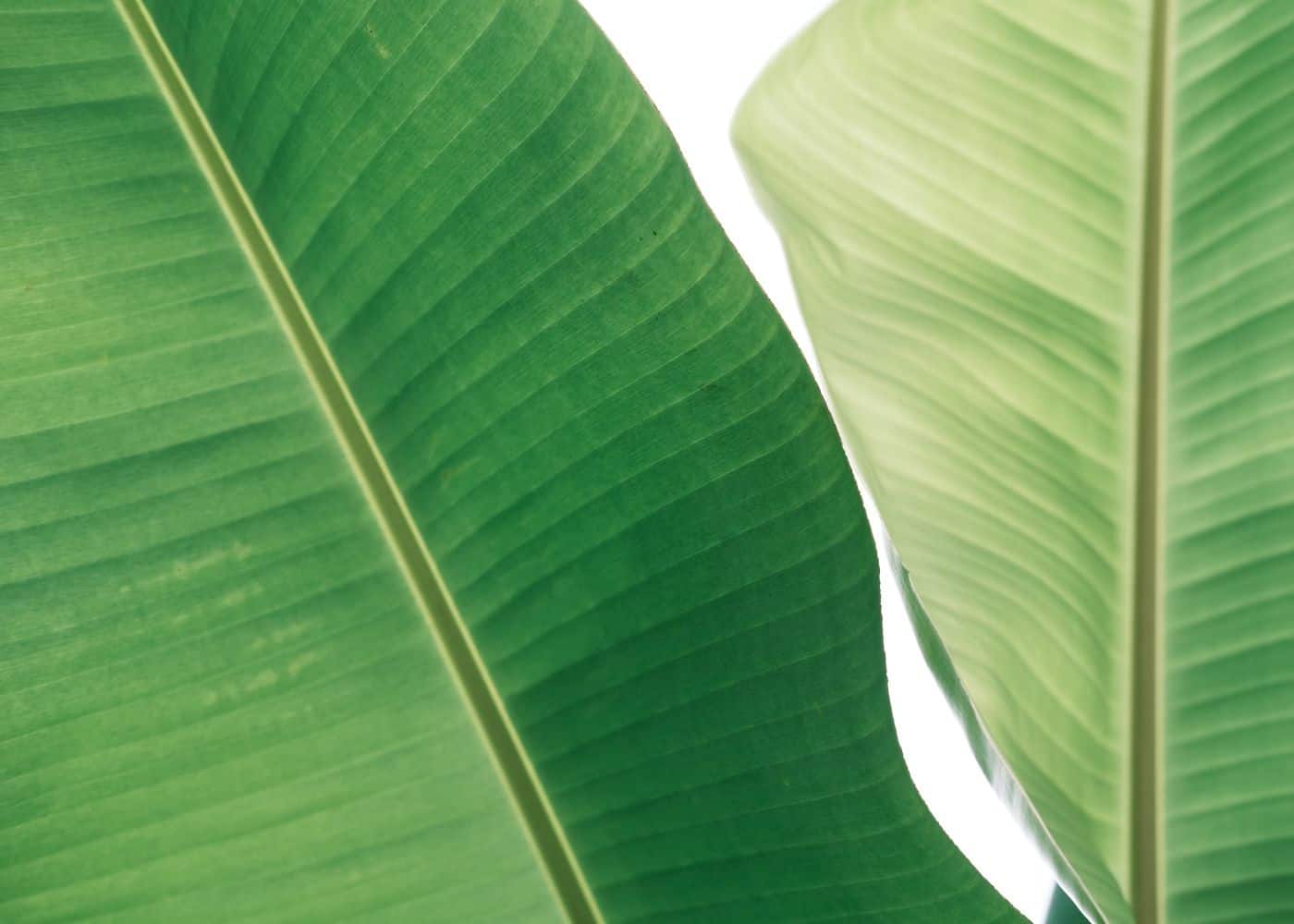
FAQs about indoor banana plants
Can I keep the banana plant indoors?
Yes, you can keep a banana plant indoors. However, it requires special care and attention to ensure the plant thrives in its new environment. You will need to provide ample light and humidity for your banana plant as well as regular watering and fertilizing. Additionally, you may want to consider pruning or staking the plant if necessary. With proper care, your indoor banana tree can bring life into any room of your home (although it likely will not fruit).
Will an indoor banana tree produce fruit?
No, an indoor banana tree will not produce fruit. The environment of a home is typically too dry and warm for the tree to bear fruit. Banana trees require high humidity and temperatures between 65-85 degrees Fahrenheit in order to produce fruit. Additionally, they need full sun or bright light for at least 8 hours per day which can be difficult to achieve indoors. Without these conditions, it’s unlikely that an indoor banana tree will ever produce fruit.
How fast do indoor banana plants grow?
Banana plants are fast-growing, tropical plants that can reach heights of up to 10 feet in just a few months. When grown indoors, they typically grow much slower than when planted outdoors. Depending on the variety and conditions, indoor banana plants may take anywhere from 6 months to 1 year to reach their full height. However, with proper care and attention, it is possible for them to grow even faster than this. Proper watering and fertilizing will help promote healthy growth while providing adequate light will also speed up the process significantly.
How often should you water an indoor banana plant?
It is important to water your indoor banana plant regularly. Generally, you should aim to water it every two or three days, depending on the size of the pot and how dry the soil feels. Make sure not to overwater; check the soil before watering and if it still feels moist, wait a few more days before watering again. If you notice that your plant’s leaves are wilting or turning yellow, this could be an indication that it needs more water. Be sure to also monitor humidity levels in your home as this can affect how often you need to water your indoor banana plant.
Before you go…
Growing an indoor banana plant is a rewarding experience that can provide you with delicious, home-grown bananas. With the right light and care, your indoor banana plant will thrive for years to come. Pruning and maintenance are key to keeping your indoor banana plant healthy and free of pests or diseases. By following these simple steps, you’ll be able to enjoy the sweet fruits of your labor in no time. So don’t wait any longer – get started on growing your own indoor banana plant today.
Resources
- How fast does a banana tree grow?
- When do banana trees bear fruit?
- How do banana trees grow?
- Should you cut dead leaves off banana trees?
- How to plant a banana tree in 4 easy steps
- How to fertilize banana trees for high yields
- How to prune banana trees
References
- Stewart, M. (2022, November 7). How to Care for a Banana Leaf Plant, Which Will Add Tropical Flair and Color to Sunny Rooms in Your Home. Martha Stewart. Retrieved February 17, 2023, from https://www.marthastewart.com/8335768/how-to-care-for-banana-leaf-plant
- Bous, S. (2022, October 18). How to Grow and Care for a Banana Plant Indoors. Better Homes & Gardens. https://www.bhg.com/gardening/houseplants/care/how-to-grow-a-banana-plant-indoors/
- Cape, M. (2019). How to Grow Banana Plants Like a Professional: Beginner’s Guide and Tips to Get You Started. Independently Published.
- Soluri, J. (2021). Banana Cultures: Agriculture, Consumption, and Environmental Change in Honduras and the United States. University of Texas Press.
Need more info?
Are you interested in learning more about indoor banana plant? Here are our best articles about it!


